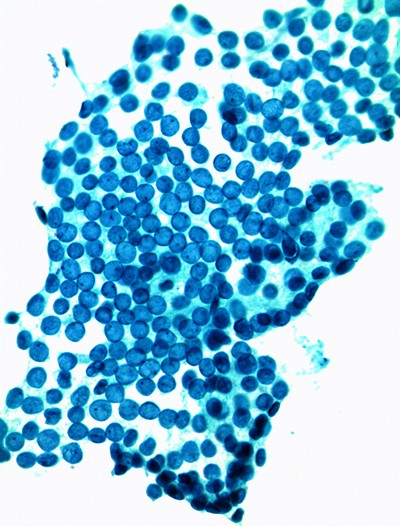News & Publications
Immunoglobulin G4-related Disease
June 1, 2014
By David C. Hoak, M.D.
Immunoglobulin G4-related disease (IgG4-RD) is an increasingly recognized syndrome of unknown etiology, most often occurring in middle-aged and older men. It is comprised of a collection of disorders that share specific pathologic, serologic, and clinical features. These different conditions were previously thought to be unrelated. The commonly shared features include tumor-like swelling of involved organs, a lymphoplasmacytic infiltrate enriched in IgG4-positive plasma cells, and variable degrees of fibrosis that has a characteristic “storiform” pattern. In addition, elevated serum concentrations of IgG4 are found in 60 to 70 percent of patients with IgG4-RD.
It is a very rare disease and has only become widely accepted in the U.S. over the last couple years. The condition has been identified in virtually every organ system, and its features are often excellent mimickers of malignancies, infections, and other immune-mediated disorders. It is often mistaken for cancer, and the roller coaster of uncertain diagnoses and cancer scares can be fairly typical in arriving at a diagnosis. The diagnosis of IgG4-related disease requires collaboration between the pathologist and the treating physician, which is critical in excluding the variety of other diseases that may show elevated serum and tissue levels of IgG4. IgG4-RD has been under-recognized and misdiagnosed as a variety of other conditions. This disease was initially recognized approximately 50 years ago, however it is only in the past decade that it has received the recognition it deserves. Most often, IgG4 disease affects older people by causing growths in the pancreas and/or bile duct system.
IgG4-related disease is a chronic and relapsing disease. The diagnosis of IgG4-RD is based on a combination of features that include clinical, imaging, serologic, histology, and immunohistochemistry. Nonetheless, histopathology has emerged as the gold standard for the diagnosis of IgG4-RD. IgG4-related disease is a multi-organ inflammatory disease in which diverse organ manifestations are linked by common histopathological and immunohistochemical features. Patients with IgG4-RD have different organ manifestations and can be followed by multiple specialties. Divergent approaches to the assessment of patients can complicate the interpretation of studies, emphasizing the critical need for validated outcome measures, particularly assessments of disease activity and response to treatment.
Certain histologic features need to be present before a diagnosis of IgG4 can be made: (1) a dense lymphoplasmacytic infiltrate, (2) storiform-type fibrosis, and (3) obliterative phlebitis. Elevated numbers of IgG4-positive plasma cells are essential for the diagnosis, but this feature is not sufficient in, and of, itself. IgG4-positive plasma cells are also seen in a variety of inflammatory and neoplastic diseases.
A biopsy performed to rule out IgG4-RD can be challenging to a pathologist. Fortunately, the histopathological features are remarkably similar across various organs. IgG4-RD is somewhat analogous to sarcoidosis in that IgG4-RD can have similar histopathologic appearance when occurring in various organs. Nonetheless, the histologic spectrum in IgG4-RD is somewhat wider than that seen in sarcoidosis. Unfortunately, not all cases fit neatly into the classic phenotype of IgG4-RD. The disease shows a spectrum of pathologic changes exhibiting a predominance of inflammation on one hand and fibrosis on the other. Furthermore, some organs such as the lung, show a limited range of responses to a wide variety of injuries, and so the histopathological changes of different diseases often overlap. Therein lies the difficulties with the histopathological diagnosis of IgG4-RD. At Incyte, we can now use immunohistochemistry to stain plasma cells for IgG and IgG4. The rates of IgG and IgG4 can be helpful in establishing the diagnosis.
IgG4-RD is now known to affect the pancreas, biliary tree, salivary glands, periorbital tissues, kidneys, lungs, lymph nodes, meninges, aorta, breast, prostate, thyroid gland, pericardium, and skin.
Although there appears to be slight variations in the basic histopathological features in some organs, the findings in general are strikingly consistent, regardless of the organ affected.
Although IgG4-RD forms a distinct, clinically independent disease category and is attracting strong attention as a new clinical entity, many questions and problems still remain to be elucidated including its pathogenesis, the establishment of diagnostic criteria, and the role of IgG4.
| Organ System/Tissue | Clinical manifestations of IgG4-related disease | Preferred Name |
|---|---|---|
| Pancreas | Type 1 autoimmune pancreatitis | Type 1 autoimmune pancreatitis (IgG4-related pancreatitis) |
| Lacrimal glands | Chronic sclerosing dacryoadenitis | IgG4-related dacryoadenitis |
| Orbital soft tissue | Orbital pseudotumor | IgG4-related orbital inflammation (or IgG4-related orbital inflammatory pseudotumor) |
| Extraocular muscle disease |
Orbital myositis scleritis | IgG4-related orbital myositis |
| Orbit with involvement of multiple anatomic structures |
Extension of pseudotumor along trigeminal nerve |
IgG4-related pan-orbital inflammation (includes lacrimal gland disease, extraocular muscle involvement, and other potential intraorbital complications) |
| Salivary glands | Chronic sclerosing sialadenitis, Mikulicz disease |
IgG4-related sialadenitis or, |
| Thyroid | Fibrosing variant of Hashimoto’s thyroiditis, Riedel’s thyroiditis |
IgG4-related thyroiditis |
| Aorta | Thoracic aortitis, abdominal aortitis, inflammatory aortic aneurysms, aortic dissection |
IgG4-related aortitis/periaortitis |
| Retroperitoneum | Retroperitoneal fibrosis (Ormond disease) |
IgG4-related retroperitoneal fibrosis |
| Skin | Erythematous or flesh-colored papules or plaques on the face or head |
IgG4-related skin disease |
| Lymph node | Generalized or localized lymphadenopathy |
IgG4-related lymphadenopathy |
| Bile ducts | Sclerosing cholangitis mimicking primary sclerosing cholangitis |
IgG4-related sclerosing cholangitis |
| Lung |
Pulmonary nodules, ground glass opacities, |
IgG4-related lung disease |
| Pericardium | Pericarditis (sometimes with constriction) |
IgG4-related pericarditis |
